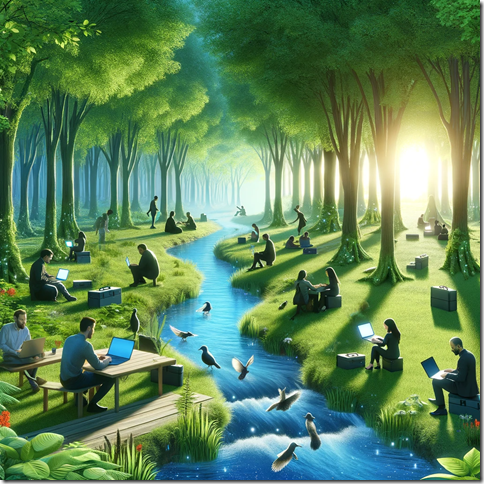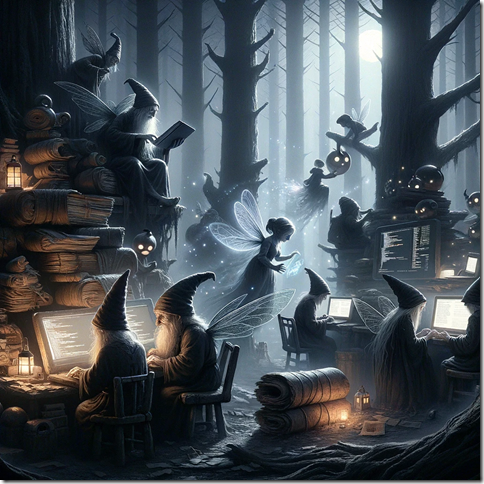When the app store became available on the iPhone 3G in July of 2008, it had 500 native apps available. When the Apple Vision Pro comes out on February 2, 2024, it will reportedly have around 200* native apps available for download.
These numbers are important in understanding how what is occurring this week fits into the origin myth of the smartphone in late capitalist popular culture.
Here I don’t use the term “myth” to mean that what we understand about the origins of the smartphone are untrue – that the app store was Apple’s “killer app”, that a sui generis army of developers became enamored of the device and built a developer ecosystem around it, that the number of native apps, mostly games, built for the iPhone grew rapidly, even exponentially (to 100,000 by 2010), that someone attached a long tail to the app store beast so that a handful of popular apps captured the majority of the money flooding into the app store, and so on. This is our established understanding of what happened from 2008 to the present. I don’t intend to undermine it.
Rather, I’m interested in how this first cycle of the Apple device story, the original course, affects the second cycle, the ricorso. After Apple reached a saturation point for its devices in its primary, affluent markets, it was able to shift and make profits from the secondary market by selling re-branded older phones to the second and third world. But towards the end of the 20-teens, it was clear that even these secondary markets had hit a saturation point. People were not updating their phones as frequently as they used to, worldwide, and this would eventually hit the bottom line. The corso was reaching its period of decline; the old king was wounded; and in this period of transition the golden bough needs to be recovered in order to renew the technological landscape.
In February 2024, Tim Cook, the king of the orchard, is restarting Apple by embracing an iPhone replacement as he prepares to hand his kingdom over to a new king. The roadmap for this is occurring in an almost ritualistic manner, with commercials that echo the best moments of the previous device revolution.
If I am reaching deeply into the collective unconscious to explain what is happening today, it is because modern marketing is essentially myth creation. And Apple has to draw up all of this mythical sense of the importance of the smartphone in order to recreate what it had in 2008. It must draw mixed reality developers into its field of influence in order to create a store that will sustain it through the next 25 years, or risk a permanent decline.
The original 2008 app store, despite a pretty terrible iPhone SDK developer experience, was successful because developers believed in the promise that they could become app millionaires. Secondarily, developers also jumped in because they believed in the romance around the Apple developer ecosystem as a nexus for artists and dreamers.
I believe Apple believes its success is dependent on making an orchard for developers to create in. As beautiful as the new Vision Pro is, it can only be an occasion for the greatness of others. And in order to attract developers into this orchard, Apple must convince them that this has all happened before, in 2008, and that there will be a golden period in the beginning when any app will make money because there are so few apps available – fruit will drop from the trees into developers’ hands and fish will leap from the rivers into their laps. There is a flaw in this myth that, oddly, will ultimately confirm Apple’s preferred narrative.
First and foremost, any developer in the mixed reality space — that is, the space where development for the HoloLens, Magic Leap or the latest generations of Meta Quest occurs – understands that there is a vast crevasse separating the world of MR developers and the world of Apple developers. All the current Apple tools: XCode, SwiftUI, the various “kits”, are built for flat applications. On the other side, development for mixed reality headsets has been done on relatively mature game engines and for the most part on the Unity Engine. These developers understand spatial user interactions and how to move and light 3D objects around a given space, but they don’t know the first thing about those Apple tools. And the learning curve is huge in either direction. It will take a leap of faith for developers to attempt it.
There was originally some excitement about a Unity toolset for Apple Vision Pro mixed reality apps called Polyspatial which seemed promising. Initially, however, it was suggested that the price for using it might be in the tens of thousands**. Later still, it appears that much of the team working on it was affected by the recent Unity layoffs. Had it succeeded, it would have offered a bridge for mixed reality developers to cross. But from the early previews, it appears to still be a work in progress and might still take 6 months or longer to get to a mature point.
I’ve only broken the potential Apple Vision Pro developer ecosystem into two tribes, but there are many additional tribes in this landscape. The current Apple development ecosystem isn’t homogenous, nor is the mixed reality dev ecosystem. Some MR devs come from the games industry and for them MR may be a short detour in their careers. Some MR devs got their big breaks doing original development for the HoloLens in 2016 – these are probably the most valuable devs to have because they have seen 9 years of ups and downs in this industry. There are digital agency natives, who tend to dabble in lots of technologies. There are also veterans of the Creative Technologist movement of 2013, though most of these have gone on to work in AI related fields. The important thing is that none of these people work like any of the others. They have different workflows and different things they find important in coding. They may not even like each other.
Even more vexing — unless you simply want to create a port of an app from another platform — you will probably need a combination of all of these people in order to create something great in the Apple Vision Pro. This isn’t easy. And because it isn’t easy, it will take a lot more time for the Apple Vision Pro to grow its store of native apps than anticipated. This is going to be a long road.
So how long will it take Apple devs to get their heads inside spatial computing? And how long will it take coders with MR experience to learn the Apple tools? To be generous, let’s say that if a small team is very focused and works together well, and if they start today, they will be able to skill up in about five months. They will need an additional 3 months to design and build a worthwhile app. Supposing some overlap between learning and building, let’s say this comes to six months. This is still six months from launch, or sometime in August, before the number of Vision Pro apps starts to pick up.
This is six months in which the availability of native apps for the Vision Pro will be relatively low and in which any decent app will have a good chance of making serious money. The current inventory for Vision Pros in 2024 is estimated to be around 400,000. 400,000 people with Apple Vision Pros, assuming they sell out (and Apple has already sold 200,000 before launch) will be looking for things to do with their devices. It’s a good bet that someone who has paid approximately $2,800 for a spatial computing headset will be willing to spend a few hundred dollars more for apps for their device.
And let’s say an average app will go for $5. Assuming just a quarter of available app purchasers will be interested in buying your app, you could easily make $500,000. This is a decent return for a few months of learning a new software platform. And the sooner you learn it, the more likely you are to be at the root of the long tail rather than at its tip.
Which is to say, even if you attempt to escape the myth that Apple is creating for itself, you will eventually find your way back to it. Such is the nature of myths and the hero’s journey. They are always true in a self-fulfilling way.
_________________________________
* On 2/2/24, the AVP was released with 600 native apps.
** Currently Polyspatial and VisionOS packages for Unity require a $2000/seat/yr Unity Pro license.



